 |
Official Webpage |



ARM ENG |
|||||
|
|||||||
Armenia is one of the cradles of ancient science, and astronomical knowledge was developed in ancient Armenia as well. Contrary to its small territory and relatively small population, Armenia was and is rather active in astronomy. Astronomy in Armenia was popular since ancient times: there are signs of astronomical observations coming from a few thousand years ago. Among the astronomical activities that have left their traces in the territory of Armenia are: the rock art (numerous petroglyphs of astronomical content), ruins of ancient observatories (two of them, Karahunge and Metzamor are especially well known; Karahunge is the Armenian twin of the Stonehenge and is considered even older), the ancient Armenian calendar, astronomical terms and names used in Armenian language since II-I millennia B.C., sky maps from Middle Ages, and most important, one of the largest modern observatories in the region, the Byurakan Astrophysical Observatory (BAO) with its 2.6m and 1m Schmidt telescopes.

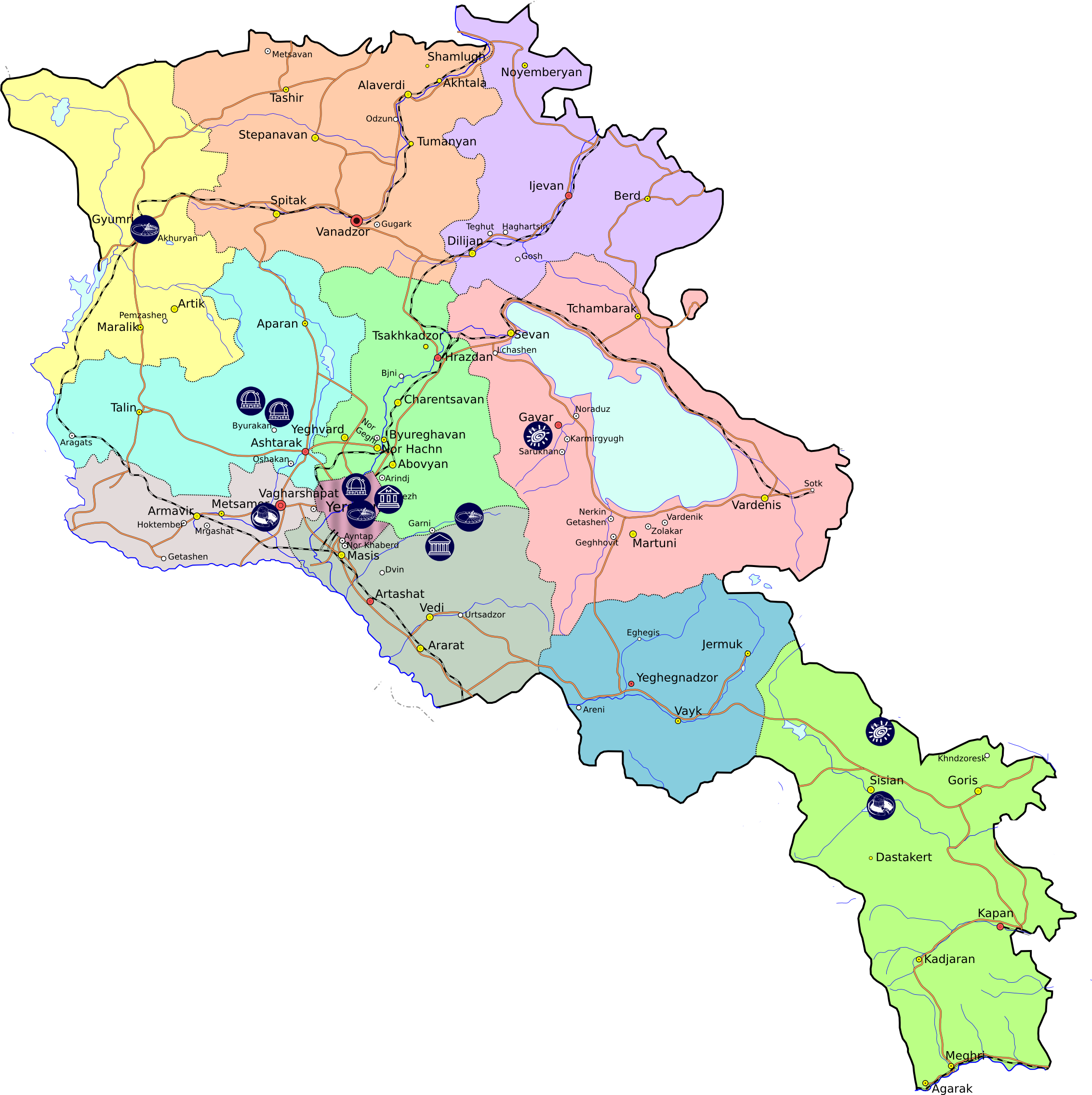
Byurakan Astrophysical Observatory is a modern astronomical center, one of the most famous observatories in the former Soviet Union, as well as the Euro-Asian Continent. The Observatory is also scientific tourism attraction. It was founded in 1946 by outstanding scientist Viktor Ambartsumian.

High politicians, Nobel Prize winners and other outstanding scientists, many other honorable guests have visited Byurakan Astrophysical Observatory. At present, the Observatory has 95 associates, including 45 astronomers.
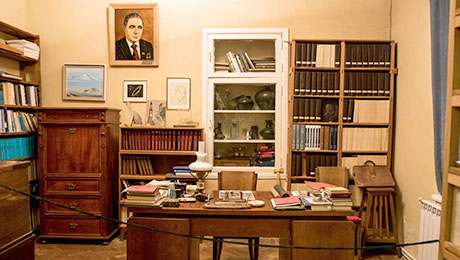
Due to new approaches and seminal scientific results the Byurakan astronomers have achieved high reputation and the Byurakan Astrophysical Observatory is recognized by the scientific community as one of the main centres for astrophysical research.

Besides being scientific and educational centre, the Observatory is famous for its unique architectural ensemble, rich botanical garden and world of birds, as well as it is one of the most frequently visited sightseeing of Armenia.

The BAO 1m Schmidt telescope is one of the largest Schmidt-type telescopes in the world and one of the most efficient astronomical telescopes in general.
Yerevan Observatory was built in 1933 (designed in 1921 by architect A. Tamanyan). The architectural design of the building includes a rectangular layout and a movable dome with cylindrical, interconnected scales. The telescope belongs to Yerevan State University.
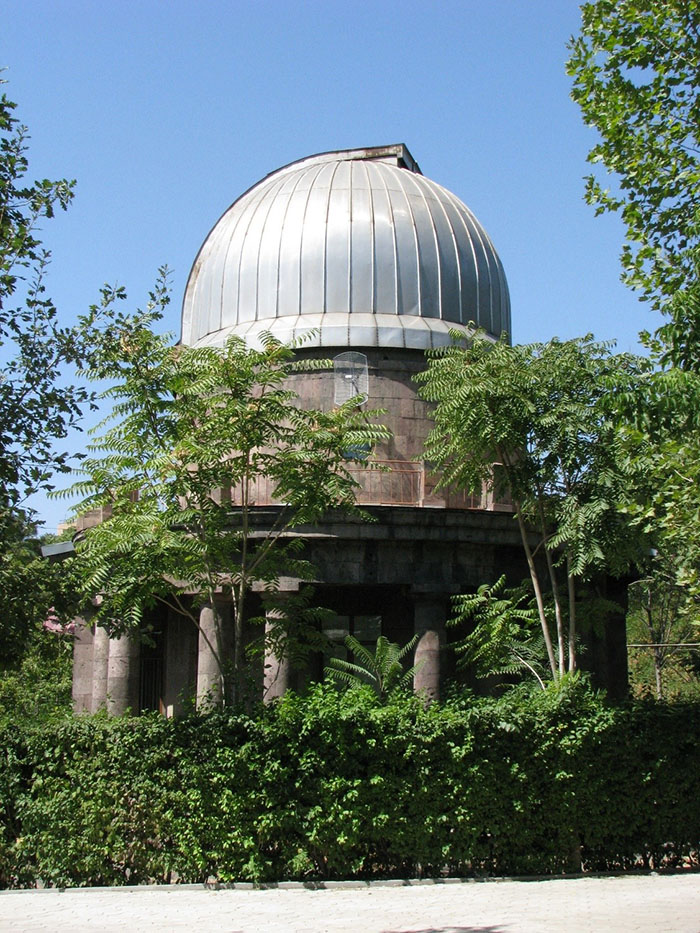
On the first floor of the building there is a large auditorium and offices, on the second floor a platform with all necessary observing devices.
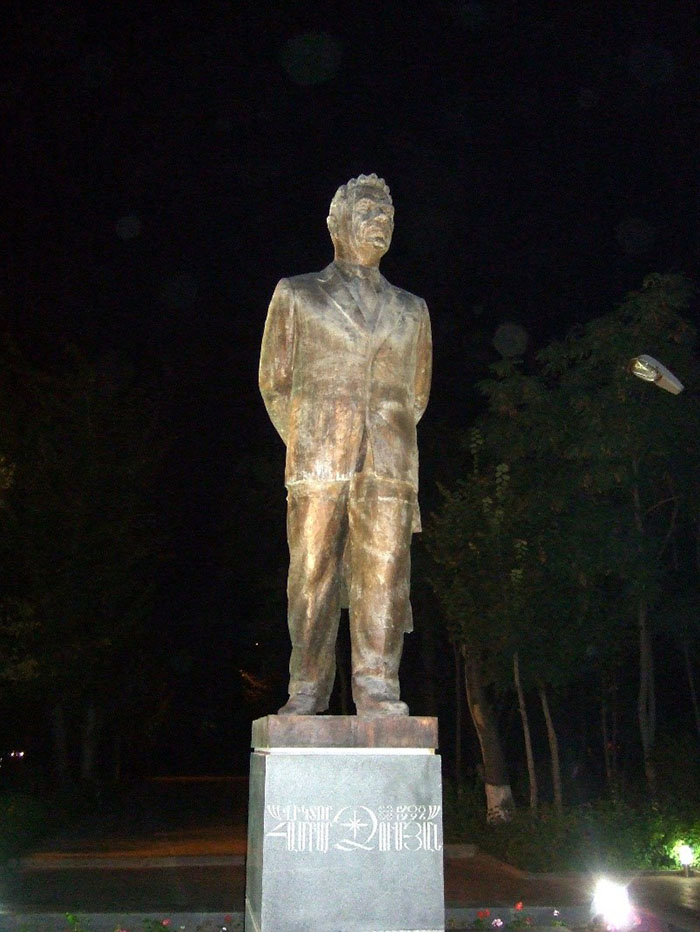
The most fascinating historical astronomical building is Karahunge (the “Armenian Stonehenge”, the name derives from kar “stone” and may mean “singing stones”; and the other famous name is Zorats Kar). It is a megalithic assemblage, 200 km from Yerevan, and 3 km from town Sisian; at an altitude of 1,770 m. The northern latitude is 39. 34’, and eastern longitude is 46. 01’. It is an assemblage of many stones put in a circle and a few arms starting from it.
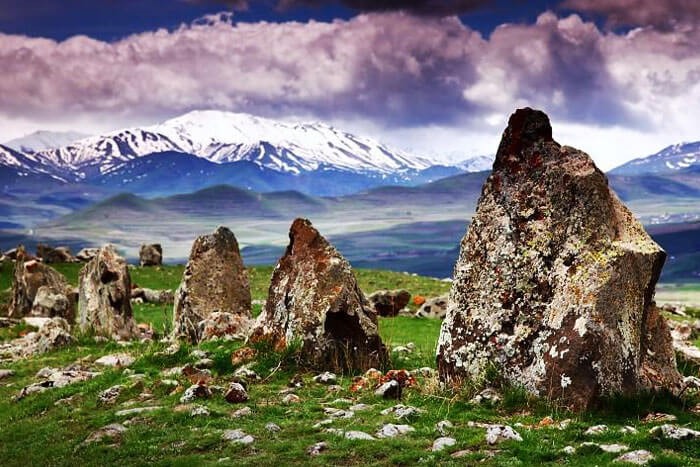
As many other such buildings, Karahunge was thought to be a religious assemblage. However, only in the middle of 1980th, Karahunge was first interpreted as an archaeoastronomical monument and was studied by Prof. E.S. Parsamian (1999) and Prof. P.M. Herouni (1998). Estimations give from 7700 to 4000 years for the age of Karahunge.
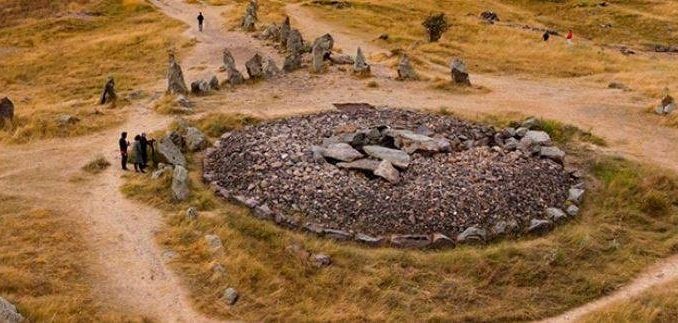
There are 222 stones with a total extent exceeding 250 metres, including 84 with holes (with 4-5 cm diameters). Dozens of astronomical stone instruments with accuracy of 30 arcsec may be found. 40 stones form the central ellipse with 45x36 m sizes, having a ruined stone-cluster in the centre. There is a 8m wide 8-stone road to N-E. Some stones were used to find the directions to definite stars. By some estimations (observations of definite stars), the observatory was used during 7700-2200 B.C., for about 5500 years. The monument is unique of its kind at least in the Trans-Caucasian region and could be even the oldest known observatory in the world.
Metzamor is the other ancient observatory in Armenia. Metzamor was an ancient town near river Metzamor, 35 km from Yerevan, in Armavir province. There was a settlement since V millennium B.C. It was first interpreted as an archaeoastronomical monument in the middle of the 1960s by Prof. E.S. Parsamian (1985).
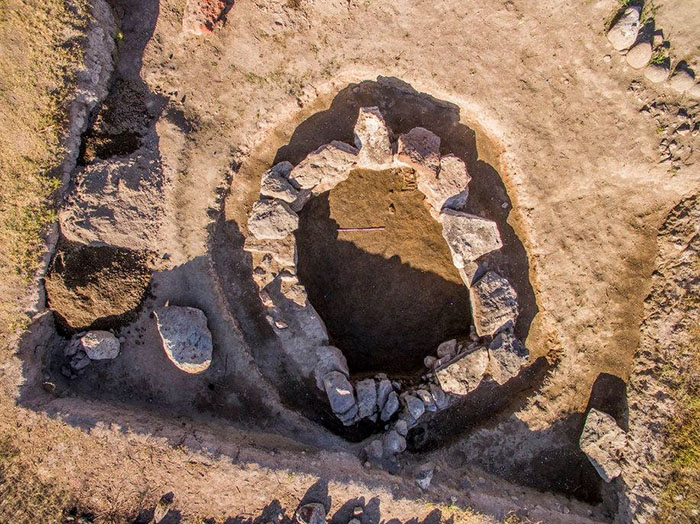
There is an observatory out of the fortress. The most probably estimation of the age is 4600 years. As Karahunge, Metzamor also needs a better study and proper attitude both from the Armenian government and world archaeoastronomical community.

Among the other archaeoastronomical sites in Armenia, the Angelakot dolmens may be named (Parsamian 1985b). As Karahunge, this site is also in Sisian region, 13 km from the town of Sisian. The dolmens are from Neolithic and Bronze eras. There are a few other sites in Armenia that are associated with astronomical activity of our ancient habitants.
The telescope is located a on Mount Aragats, at a height of 1,711 metres (5,614 ft). The radio telescope has a diameter of 54 m (177 ft). It is hemispherical, and fixed to the ground, with a movable secondary mirror with a diameter of 5 m (16 ft). This provides a useful diameter of 32 m (105 ft). It has a surface accuracy around 70/100 μm, giving an operating wavelength of 30-3mm (10-100GHz), and was originally designed to observe down to 1 mm (300 GHz).

Construction took place between 1975 and 1985, first operating in 1986. It was not damaged by the 1988 Armenian earthquake, and was used for observations between 1987 and 1990.
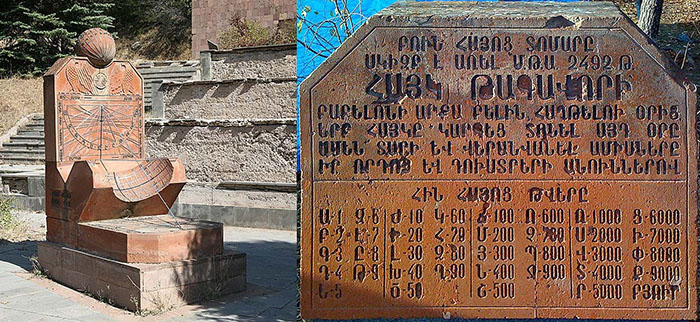
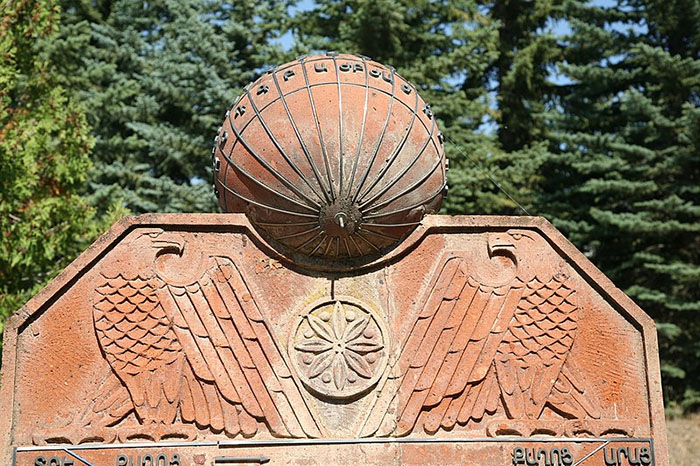
The optical telescope has a 2.6 m (8.5 ft) mirror, with a 10 m (33 ft) focal length. Telescope never operates from the date of its implementation.

Here you will feel the excitement of the early years of space epoch, touching genuine devices operated in space and then returned to Earth, in the unique documents on cosmonauts, spacecraft designers, foremost scientists.

The museum has been inaugurated at solemn ceremony on June 27, 2001 in the territory of Garni space astronomy institute. In Garni center under the direction of Grigor Gurzadyan space observatories ORION have been created, over 40 cosmonauts have passed their pre-flight training there. This activity, however, remained largely unknown to the public due to the secrecy of Soviet epoch.


The exposition of the museum includes unique items of early space epoch created in Armenia: a genuine landing capsule returned from space, other items operated in space, replica of space observatory ORION-2 being exhibited in EXPO-2000, Hanover, other devices operated at space experiments. Also, the exhibition includes remarkable documents associated to early space research and space flights, handwritten documents by Soviet cosmonauts, designers of spacecrafts VOSTOK, SOYUZ and scientists, as well as of NASA astronaut and the designer of American spacecraft.
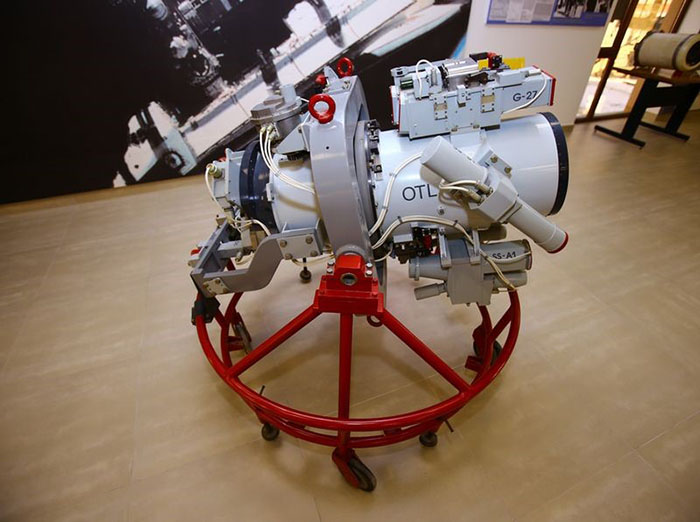
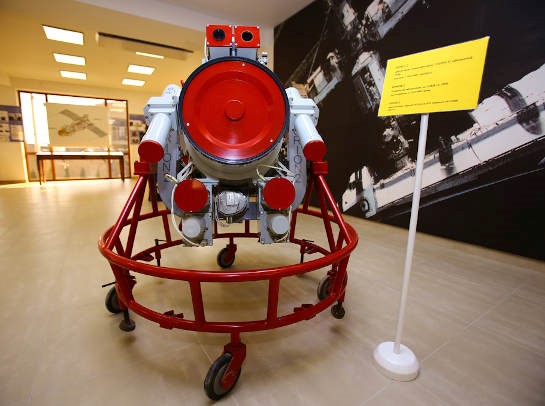
Among the precious documents exhibited in the museum is a handwritten draft article by Nobel laureate Hans Bethe, a German-American physicist, a key figure in the creation of the first nuclear bombs; the article is written together with Grigor Gurzadyan.
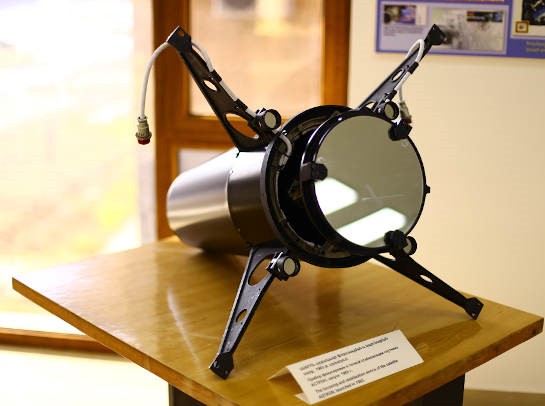
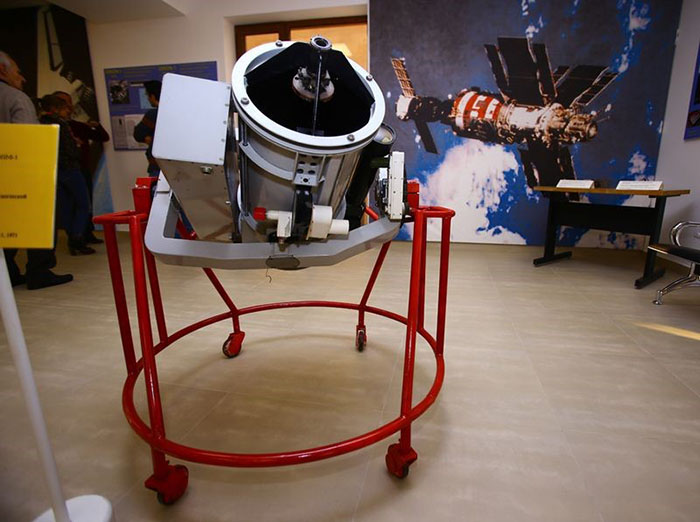
Sundial is a device that tells the time of day when there is sunlight by the apparent position of the Sun in the sky.
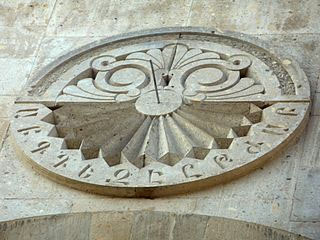
This device was widely used in Armenian medieval monuments and currently these monuments are considered as Astro Tourism sites.
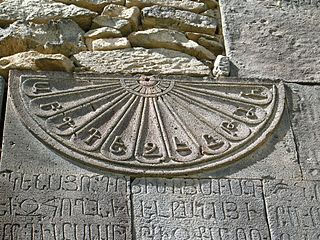
In the narrowest sense of the word, it consists of a flat plate (the dial) and a gnomon, which casts a shadow onto the dial. As the Sun appears to move across the sky, the shadow aligns with different hour-lines, which are marked on the dial to indicate the time of day.

Studies of the Armenian rock art present in the territory of modern Armenia (historic Armenia was ten times larger, having 300,000 square km area) show that the Armenians were interested in heavenly bodies and phenomena.

The Earth, the Sun, the Moon, planets, comets, Milky Way, stars, constellations are reflected in these pictures drawn on rocks in mountains around Lake Sevan and elsewhere in Armenia. These pictures and drawings are being studies by a number of historians, archaeologists, and astronomers. However, there is not enough governmental attitudes to organize large-scale studies or at least try to catalog and preserve these ancient treasures.
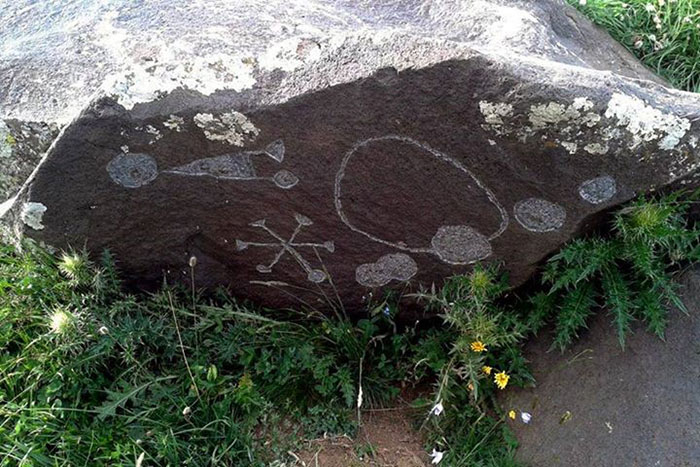
A great number of petroglyphs - rock-carvings has been found in the area of Gegham Mountains. Most images depict men in scenes of hunting and fighting, and astronomical bodies and phenomena: the Sun, the Moon, constellations, the stellar sky, lightning, etc.
The structure was probably built by king Tiridates I in the first century AD as a temple to the sun god Mihr, it is the best-known structure and symbol of pre-Christian Armenia.
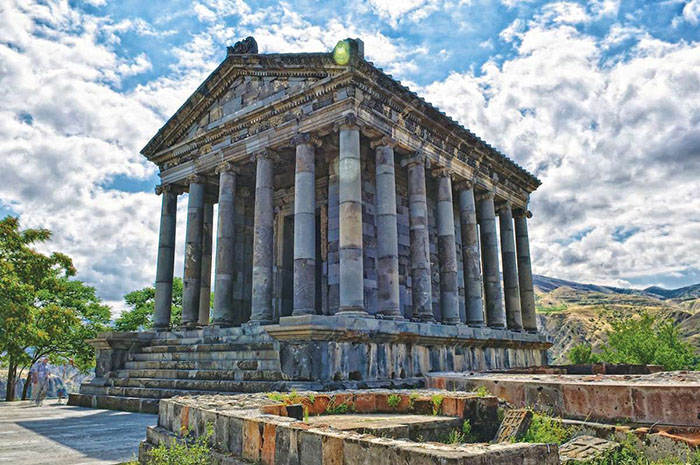
The triangular pediment depicts sculptures of plants and geometrical figures. The staircase has nine unusually high steps—30 centimetres (12 in) high.
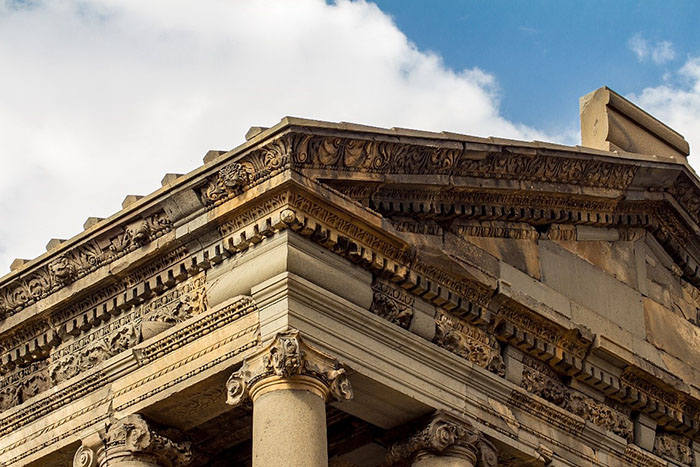
The temple follows the style of classical Ancient Greek architecture which began developing in the seventh century BC. Scholars have variously described the structure as Greek, Roman or Greco-Roman and have usually linked it to Hellenistic art, often pointing out its distinct features and local Armenian influence.